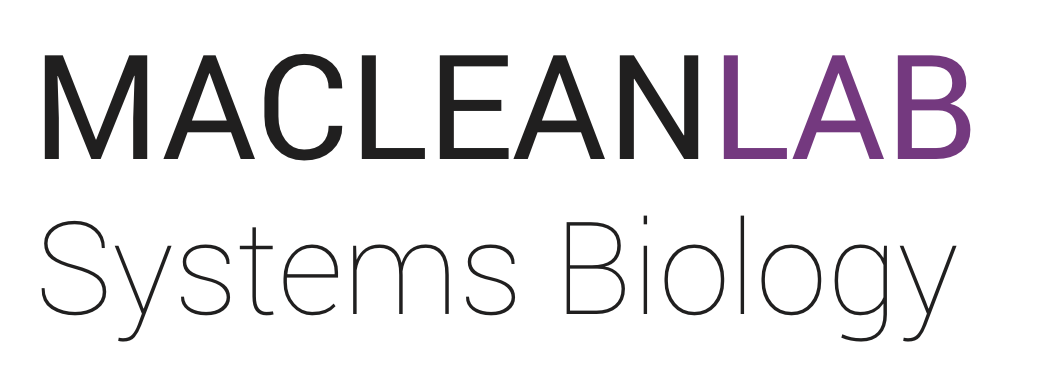popInfer: a novel method for the inference of gene regulatory networks governing dynamic cell state transitions is published now in iScience. popInfer learns cell type-specific networks governing dynamic transitions by learning a joint regression model using both RNA-seq and ATAC-seq signals from the same single cells. Applied to a multiomic dataset on hematopoietic stem cell aging, popInfer discovered a mutual inhibition network between Mecom and Cdk6 that controlled stem cell quiescence.
Adam attended the mathematical oncology 2025 conference #mathonco25 in St. Petersburg, FL, for three days at the cutting edge of mathematical & computational research in oncology centered around the theme of “Evolutionary therapy” on the beach. Adam presented a didactic talk on “Non-genetic paths of tumor escape” based on our recent work into the logic of gene regulatory networks and its impact on EMT and metastasis.

Our new preprint led by Jesse with input from Xiaojun and the Roussos Torres lab is out now: Beyond RECIST: mathematical modeling and Bayesian inference reveal the importance of immune parameters in metastatic breast cancer.
In which we present a modeling+inference framework to extrapolate beyond small, heterogeneous phase 1 cohorts and personalize tumor-immune models of response to triple combination therapy. We discover that control only of the immune suppressive parameters and not of the cytotoxic parameters is necessary to explain response. Read the paper here.
Today on the mathematical oncology blog (a great resource to follow), Jesse has written a blog post highlighting the findings of our recent preprint on cancer systems immunology. Integrating theory and modeling with preclinical and clinical data enabled discovery of how combination therapy acts on intricate tumor-immune networks to mediate tumor response. Read the blog post here.
The Society for Mathematical Biology (SMB) held its annual meeting in Edmonton, where Xiaojun presented on methods for model discovery from noisy biological data (read the paper),
and Adam presented on our recent cancer systems immunology work leading to the discovery of mechanisms driving response to combination therapy (read the preprint) plus new work inferring patient- and site-specific tumor-immune dynamics to inform clinical decision making from RECIST data. Thanks to the hosts, the SMB community is strong!
Two new preprints are out this month from our lab in collaboration with the Evanthia Roussos Torres lab at USC Keck. In the first, Yingtong developed a new method, iterative logistic regression: iLR, to identify subtle effects in single-cell gene expression datasets. This led to the discovery of myeloid cell differentiation pathways as a target of entinostat, an epigenetic modulator. Read the preprint here.
In the second, Jesse co-led a large cancer systems immunology project with Edgar Gonzalez that integrated preclinical and clinical data with mathematical models to reveal how combination therapies act on tumor-immune interactions during breast cancer metastasis. We discovered an essential role for myeloid-derived suppressor cell and tumor-associated macrophage interactions with T cells, as well as B cell activation, in mediating the effects of therapy. Read the preprint here.
Anupam led a project on the role of logic in modeling gene regulatory network (GRN) dynamics. Through a detailed investigation into the role of logic in GRN models of EMT and developmental fate decisions, we discovered that choice of logic (AND vs OR) profoundly impacts cell fate. We go on to highlight — beyond the caution that must be exercised in choice of logic — that through experimental design it is possible to infer the logic of GRNs in vivo. Read the paper in Development.
Also, thanks to an initiative from the Company of Biologists, a pedunculate oak tree accompanies our paper in the Forest of Biologists.
In a new paper led by MeiLu, published today in npj Systems Biology and Applications, we sought to define the extent to which paths through EMT intermediate states are shared and — by fitting a mathematical model of the cell state transition dynamics — were able to identify genes that mark for the *dynamic* regulation of EMT across cancer types and stimuli.
Adam attended the Systems Approaches to Cancer Biology 2025 conference at CU Anschutz, CO, where he presented recent work from collaboration with the Roussos Torres lab at USC Keck on awakening immune responses in metastatic tumor microenvironments. The science was excellent, as was the snow.

Our paper led by Xiaojun on Data-driven model discovery and model selection for noisy biological systems has been published PLOS Comp Biol. Mathematical models wielded skillfully can offer great insight into biological systems. The process of constructing models, however, is typically manual and labor-intensive. Data-driven model discovery provides an exciting alternative but dealing appropriately with the typical level of biological noise we observe in data is a challenge. Here we presents model discovery and model selection methods to infer models and evaluate the current limits of model discovery from noisy data.


